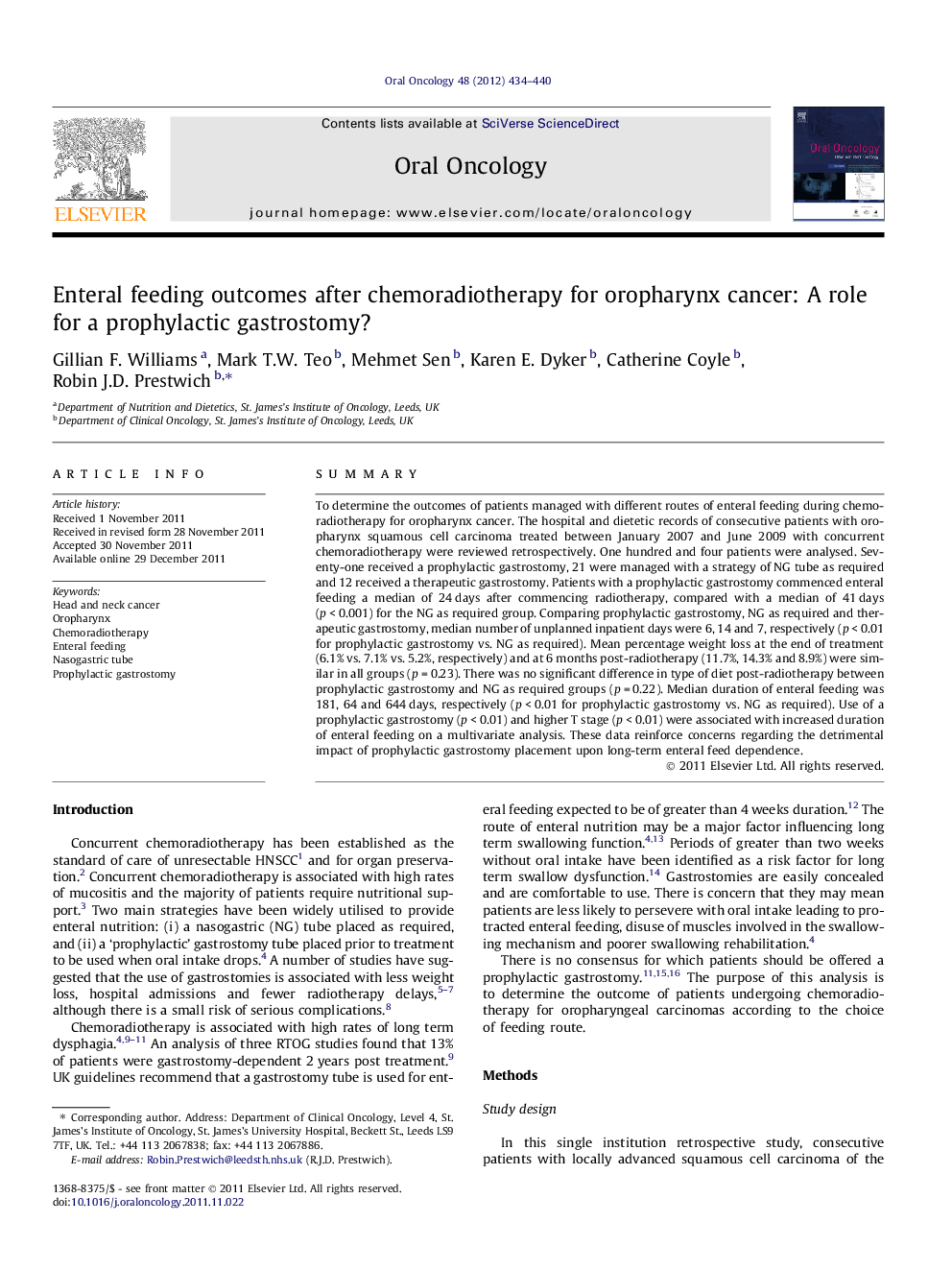| Article ID | Journal | Published Year | Pages | File Type |
|---|---|---|---|---|
| 3164220 | Oral Oncology | 2012 | 7 Pages |
SummaryTo determine the outcomes of patients managed with different routes of enteral feeding during chemoradiotherapy for oropharynx cancer. The hospital and dietetic records of consecutive patients with oropharynx squamous cell carcinoma treated between January 2007 and June 2009 with concurrent chemoradiotherapy were reviewed retrospectively. One hundred and four patients were analysed. Seventy-one received a prophylactic gastrostomy, 21 were managed with a strategy of NG tube as required and 12 received a therapeutic gastrostomy. Patients with a prophylactic gastrostomy commenced enteral feeding a median of 24 days after commencing radiotherapy, compared with a median of 41 days (p < 0.001) for the NG as required group. Comparing prophylactic gastrostomy, NG as required and therapeutic gastrostomy, median number of unplanned inpatient days were 6, 14 and 7, respectively (p < 0.01 for prophylactic gastrostomy vs. NG as required). Mean percentage weight loss at the end of treatment (6.1% vs. 7.1% vs. 5.2%, respectively) and at 6 months post-radiotherapy (11.7%, 14.3% and 8.9%) were similar in all groups (p = 0.23). There was no significant difference in type of diet post-radiotherapy between prophylactic gastrostomy and NG as required groups (p = 0.22). Median duration of enteral feeding was 181, 64 and 644 days, respectively (p < 0.01 for prophylactic gastrostomy vs. NG as required). Use of a prophylactic gastrostomy (p < 0.01) and higher T stage (p < 0.01) were associated with increased duration of enteral feeding on a multivariate analysis. These data reinforce concerns regarding the detrimental impact of prophylactic gastrostomy placement upon long-term enteral feed dependence.
